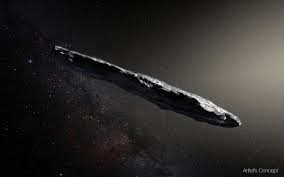Oumuanua Suddenly Showed Up Again and Is Now Heading Towards The Earth ! - Chapter 2

Oumuanua Suddenly Showed Up Again and Is Now Heading Towards The Earth! - Chapter 2 Ladies and gentlemen and welcome to the our blog site; De Science Discovery. Today, we shall continue on a fascinating journey that we embarked on last week into the depth of space to unravel the mysterious tale of oumuamua. Oumuamua, the first known interstellar object that visited our solar system, has intrigued scientists worldwide. In this educational article, we will explore Its peculiar characteristics, the theories surrounding its origin, and the impact it has had on our understanding of the universe. Get ready to expand your knowledge and immerse yourself in the wonders of the cosmos. Let’s begin! Mysteries surrounding oumuamua origin and composition Scientist concludes that interstellar object ‘oumuamua must be very elongated because of its dramatic variations in brightness as it tumbled through space. They also conclude that vents on the surface must have emitted jets of gases, giv...





